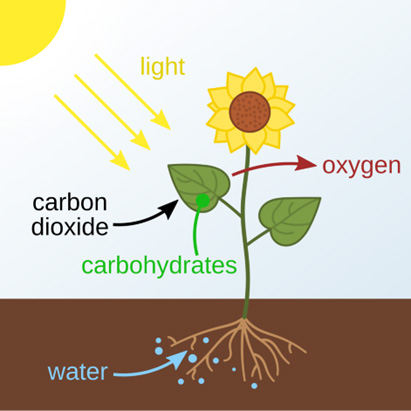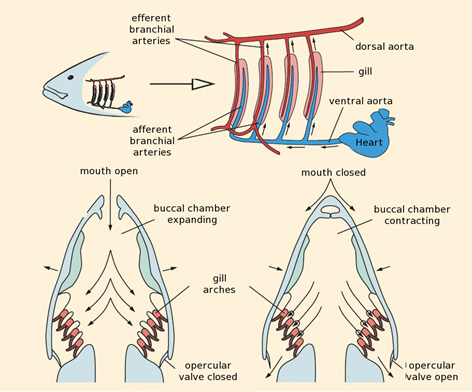HiSET Science Study Guide: Life Science
Life science questions will assess your knowledge and understanding of:
- Living things and their environments
- Competition and interaction among living things
- The relationships and functions of living systems
- Human body systems
Let’s review some life sciences basics. Remember, becoming familiar with these terms and ideas is your goal, not memorization.
Cells
Cells are the building blocks of life. Each has a cell wall (plants) or cell membrane (animals) that separates it from other cells. Inside are different structures known as organelles. Each organelle has a specific function. Here are a few you need to know:
- Nucleus: Contains the genetic information in the form of DNA.
- Mitochondrion: Generates chemical energy the cell needs to live.
- Vacuole: Contains water and maintains the cell’s pH (this is more important in plant cells than animal cells).
- Lysosome: Helps break down chemicals as a waste-disposal system for the cell.
Cells divide through a complex process known as mitosis. Although you do not need to memorize the steps, it’s good to know the stages and what happens in them:
- Prophase: The nucleus begins to change, signaling the beginning of cell division.
- Prometaphase: The small membrane around the nucleus dissolves.
- Metaphase: Chromosomes line up for separation.
- Anaphase: Chromosomes pull apart from one another and move to opposite sides of the cell.
- Telophase: Membranes form around each set of identical genetic information and the cell splits in two.
Animals
Animals are broadly divided into two major groups based on the presence or absence of a vertebral column (backbone):
Invertebrates
Invertebrates are animals without a backbone. They make up more than 95% of all animal species and are incredibly diverse. Major invertebrate groups include:
- Arthropods: Segmented body; jointed limbs; exoskeleton (external skeleton). The largest animal phylum, including insects, spiders, crabs, and shrimp.
- Mollusks: Soft, muscular bodies; many have shells; complex nervous systems. Includes snails, clams, octopuses, and squid.
- Annelids (segmented worms): Long, segmented bodies; no limbs; many are decomposers or parasites. Includes earthworms and leeches.
- Cnidarians: Radial symmetry; stinging cells; simple body structure. Includes jellyfish, corals, and sea anemones.
- Echinoderms: Spiny skin; radial symmetry (in adults); live in marine environments. Includes starfish, sea urchins, and sea cucumbers.
Vertebrates
Vertebrates are animals with a backbone. They belong to the phylum Chordata and include the following major classes:
- Mammals: Warm-blooded; give birth to live young (with a few exceptions, like the platypus); produce milk to feed their young. Includes humans, whales, dogs, and bats.
- Birds: Warm-blooded; lay eggs and have feathers; most can fly. Evolved from certain groups of dinosaurs. Includes eagles, penguins, and sparrows.
- Reptiles: Cold-blooded; have scales; most lay eggs on land. Includes snakes, lizards, turtles, and crocodiles.
- Amphibians: Cold-blooded; begin life in water with gills and later develop lungs. Includes frogs, salamanders, and toads.
- Fish: Cold-blooded; live in water; use gills for breathing. Can be divided into bony fish (like trout and tuna) and cartilaginous fish (like sharks and rays).
Hint
All vertebrates have internal skeletons (endoskeletons). All arthropods and many other invertebrates have external skeletons (exoskeletons).
Behaviors
Living things perform different behaviors. These behaviors fall into one of four categories:
- Instinct: A behavior that does not require thinking or learning. In the winter, a bear’s instinct is to hibernate.
- Learned Behavior: A behavior that requires learning. Lion cubs learn to hunt by watching their parents.
- Reflex: A reflex is a behavior rooted in a biological structure or process. Your hand immediately pulls away from a hot surface to prevent burns due to feedback mechanisms in your body.
- Self-Preservation: A type of instinct; specific behaviors that increase the chance of survival. An animal may keep itself hidden if it senses that predators are nearby.
Plants
Plants are living organisms that make their own food using sunlight, water, carbon dioxide, and minerals from the soil. This process is called photosynthesis, and it mostly takes place in their leaves. During photosynthesis, plants convert sunlight into energy and release oxygen as a byproduct.
A substance called chlorophyll helps plants absorb sunlight. Chlorophyll is found in plant leaves and is also what gives most plants their green color.
Plants rely on their roots to absorb water and important nutrients like nitrogen, which help them grow. They are a vital part of Earth’s ecosystems, providing food, oxygen, and shelter for many other living things.
Many plant species share common structures, such as a central stem. They produce pollen to reproduce. Bees and other insects pollinate plants while collecting their nectar from flowers. The pollen attaches itself to insects and then is deposited onto other plants.
Although fungi are a separate branch of life, they share some similarities with plants. They have similar cell structures and growth patterns. However, fungi reproduce asexually from spores rather than seeds. Many fungi rely on the wind to carry their spores to new areas.
Evolution
Evolution is the scientific theory that explains how species change over time. It describes how living organisms develop new traits and adapt to their environments through a process called natural selection. This theory was first widely explained by Charles Darwin in the 1800s.
Natural selection means that individuals with traits better suited to their environment are more likely to survive and reproduce, passing those traits to the next generation. Over many generations, small changes can add up, leading to the development of new species.
Evidence for evolution includes:
-
Fossils, which show how organisms have changed over millions of years
-
Comparative anatomy, such as similar bone structures in different animals
-
Genetics, which reveals shared DNA among related species
Evolution helps explain the diversity of life on Earth and how organisms — from fish to mammals — have adapted to survive in different environments.
Heredity
Heredity is the process by which traits — such as eye color, hair type, or blood type — are passed from parents to offspring. In the 19th century, an Austrian friar named Gregor Mendel became the first scientist to systematically study heredity. Through experiments with pea plants, Mendel discovered that some traits are dominant (they appear even if only one parent contributes the trait), while others are recessive (they appear only if both parents pass on the trait).
Although Mendel identified how traits behave, he did not know what caused them. In the 20th century, scientists discovered DNA and RNA, the molecules that carry genetic information. These discoveries led to the field of genetics, the branch of biology that studies how genes are passed down and expressed in living organisms.
Genetics has led to major scientific advances, including the identification of genetic disorders — conditions that are inherited from a person’s parents. Today, genetic testing allows potential parents to learn whether they carry genes for inherited diseases. Other genetic disorders result from mutations, which are changes or errors in DNA that can occur during cell division (mitosis). Some mutations are harmless, but others can lead to serious conditions such as cancer.
Human Anatomy
Doctors need at least four years of medical school to memorize human anatomy, but you only need four minutes to review the information necessary to excel on HiSET test day.
- Nervous System: The nervous system sends electrical signals from different parts of the body to the brain. This network lets the body react to dangerous situations, such as pulling away from a hot surface or producing “fight or flight” hormones.
- Respiratory System: Every time you breathe, your respiratory system (e.g. the lungs) absorbs oxygen and expels carbon dioxide.
- Digestive System: Consisting of the stomach and intestines, the digestive system breaks down food, absorbs vital nutrients, and expels solid waste.
- Circulatory System: Your heart, arteries, and veins pump oxygenated blood from the lungs into every part of your body. Your body’s metabolism creates carbon dioxide, which your circulatory system brings back to the lungs so you can exhale it.
- Skeletal System: Your skeletal system supports and protects your body’s organs, muscles, and other tissues. The skeletal system’s other functions include producing new blood cells.
Elements of the Human Body

Source: OpenStax College, licensed under CC BY 3.0, via Wikimedia Commons
The majority of the human body consists of three common elements:
oxygen, carbon, and hydrogen.
Health
Staying healthy involves a combination of lifestyle choices, disease prevention, and access to healthcare. Many health problems are linked to environmental factors such as pollution, poor nutrition, or exposure to harmful substances like lead, asbestos, or carbon monoxide. These factors can contribute to illnesses like certain cancers, asthma, and other chronic conditions.
A strong immune system plays a key role in staying healthy. People with immunodeficiency — a weakened immune system — are more vulnerable to infections and illnesses. However, even healthy people can benefit from acquired immunity, which develops after recovering from a disease or receiving a vaccination. Vaccines safely expose the body to a small, inactive part of a virus or bacteria, training the immune system to respond quickly if exposed again. Vaccination helps prevent the spread of diseases like the flu, measles, and whooping cough (pertussis).


